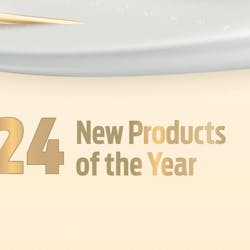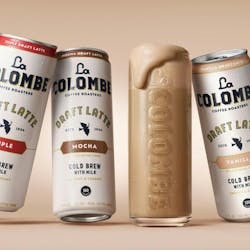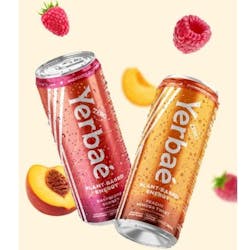ALEXANDRIA, VA -- The results of a second benchmarking study released today by the International Bottled Water Association (IBWA) show that the amount of water and energy used to produce bottled water products in North America is still less than all other types of packaged beverages. On average, 1.32 liters of water (including the liter of water consumed) and 0.24 mega joules of energy are used to produce one liter of finished bottled water.1
“Water and energy use efficiency are critical for the bottled water industry and positively impact the sustainability of water resources and business viability,” says IBWA vice president of communications Chris Hogan. The first benchmarking study in 2013 focused only on water use; however, given energy’s critical importance in bottled water production, this second study, produced by Antea Group, an independent third-party consultant, added an energy component to better understand resource use efficiencies in the industry.
In total, 76 North American bottled water facilities contributed to the study - a 20 percent increase in participation from the inaugural study conducted last year, and a demonstration of the continued dedication of IBWA members to better understand the industry’s water and energy use performance. The participating facilities in the current study represent 21.6 million liters of bottled water production, over half (56 percent) of total 2013 United States bottled water consumption.
Participants were asked to provide five years (2009 C 2013) of facility-specific information, including facility type, total water use, total energy use, total production, and supplementary process information (e.g., type of water treatment, use of refillable bottles). The two key performance metrics for this study are the water use ratio and energy use ratio, which present the average amounts of respective water (liters C L) and energy (mega joules C MJ) used within the facility to produce one liter of bottled water.
The water and energy use ratios for North American bottled water facilities (1.32 L/L and 0.24 MJ/L, respectively) demonstrate more efficient levels of performance when compared to the global average for bottled water facilities. The study found that bottled water facilities have the lowest water and energy use ratios when compared to other beverage sectors.
Trends in water and energy use demonstrate that investment in efficiency measures and process improvements are yielding positive results in water, energy, and cost savings, even while the industry experiences sustainable growth. The study’s data show that, on average, total water use and total bottled water production increased from 2009 to 2013, while water use ratio decreased two percent over the same period. Total energy use and total bottled water production increased from 2009 to 2013, while energy use ratio decreased 14 percent over the same period.
The study also identified key initiatives the industry has taken on water and energy resource stewardship, including improving performance and recovery in the reverse osmosis process; optimization of washer units through automated timers, selection of cleaning chemicals, flow control, air rinsing, etc.; and reducing filler overflow through system optimization. Energy management programs and initiatives include regular inspection, leak testing and repair programs for compressed air systems and steam systems; optimized production schedules to minimize frequency of startup/shut down times; regular cleaning and inspection of HVAC systems for optimum performance; automatic/timed temperature controls; and standard use of high\efficiency motors. Additional details on these significant process improvements can be found in the study’s executive summary.
This 2014 report, produced by Antea Group, an independent third-party consultant, reflects an amended data set C the 2009, 2010, and 2011 values previously reported in the 2013 study have been revised in this new report and should be the referenced historic performance values moving forward. Antea Group conducted the data collection process, verification, analysis, and reporting.
Footnote: 1 The study presents results in units that align with other beverage industry studies (1 liter = 0.2641 U.S. gallon; 1 mega joule = 0.2778 kilowatt hours.





